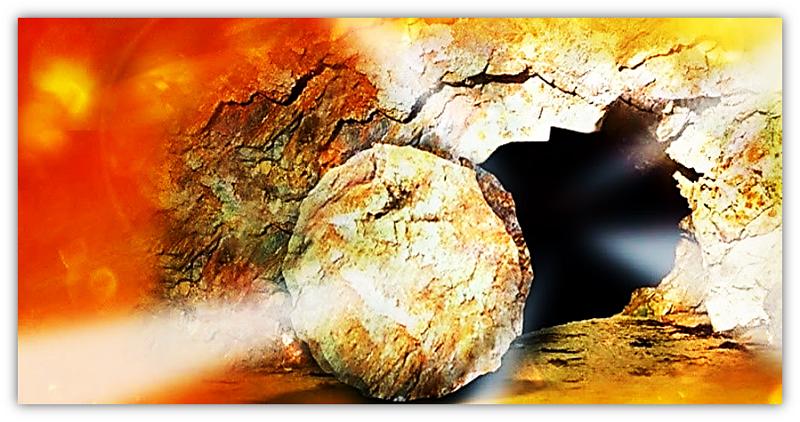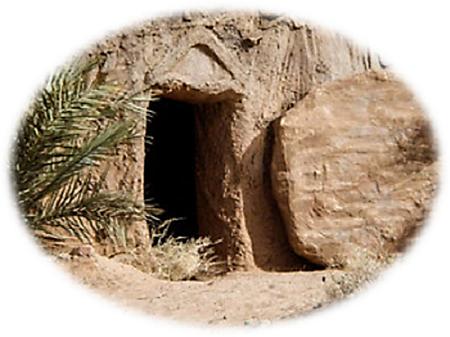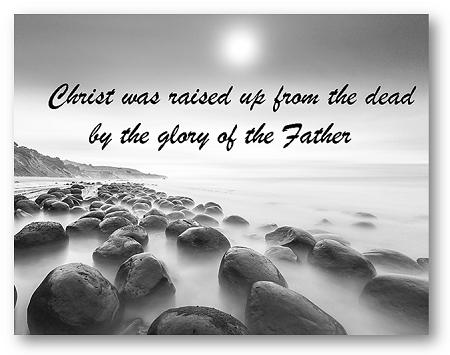The Miracles of Christ: The Resurrection
The Miracles of Christ: The Resurrection
Read Matthew 28:1-10

We have looked at a number of the important miracles that Christ performed during His earthly ministry. He performed additional miracles from heaven through His apostles, recorded in the book of Acts. For example, the lame man at the Gate Beautiful was healed by the power of Christ’s name (Acts 3:16). And through power given to him by Christ, Peter raised Dorcas from the dead (Acts 9:40) and Paul raised Eutychus (Acts 20:10-11).
Other miracles took place in connection with Christ’s coming to and leaving this world. His incarnation through the virgin birth was a great miracle (Matt. 1:23; John 1:14). The ascension into heaven could also be classified as a miracle, as Christ was bodily received into heaven (Acts 1:9-10).
As we conclude our treatment of the miracles, I want to draw attention to a pivotal miracle undergirding all the rest. It is the miracle of the resurrection. It is the miracle to which all Christ’s miracles point.
The Necessity of the Resurrection⤒🔗
Miracles were great evidences that Christ had been sent by God as the Messiah to save sinners from their sin. However, if Christ had only done a few miracles, turning back the curse for a few years, the gospel would be no gospel. As glorious as the miracles of Christ during His ministry were, none of them comes close to the miracle on which the church stands and to which she owes her existence.
As the healing of the blind and lame was predicted by the Old Testament (Isa. 35:5-6), so the resurrection of Christ was explicitly prophesied by David in Psalm 16:
For thou wilt not leave my soul in hell; neither wilt thou suffer thine Holy One to see corruption.Psalm 16:10; see Acts 2:27, 31; 13:35
This meant that it was necessary not only for Christ to heal the sick and raise the dead; He would also raise Himself from the dead.
We can pinpoint the enormous difference between the miracles Jesus performed during His ministry and this miracle of resurrection that marked His victory over sin and the grave. Christ’s ministry miracles were signs that He was approved by God (Acts 2:22); His resurrection sealed the fact that His people are accepted by God (Rom. 1:4; 4:25; 1 Pet. 1:21). Without the resurrection from the dead, “We are of all men most miserable” (1 Cor. 15:19).
In 1 Corinthians 15, the great chapter in which Paul unpacks the necessity, beauty, and glory of the resurrection, he writes,
But now is Christ risen from the dead, and become the first-fruits of them that slept.1 Corinthians 15:20
The various miracles we looked at all called for and anticipated the great miracle of the resurrection. After all, those miracles were not just badges of sublime divinity, but pictures of the redemptive message, and this redemption could not have come without the death and resurrection of Christ.

The Place of the Resurrection←⤒🔗
The previous miracles we looked at took place all over the area: in synagogues, in houses, on the sea, in crowds, on the grassy hillside. One miracle took place as a young man was being carried to his grave (Luke 7:14). Another miracle (which we didn’t consider) took place as Lazarus was called out of his grave (John 11:43-44). Even then, however, the Resurrection and the Life stood outside his grave and called him from his grave. The miracle we are now considering took place inside the sepulcher with the stone rolled in front of it.
We need to let the fact that this miracle took place in a sepulcher sink in. The sepulcher or grave is normally a monument to the power of death. Apart from the truth of God’s redeeming grace, every gravestone is a victory marker for death because of sin. So too, from one angle, is the sepulcher of Christ.
In fact, by itself, the tomb in the garden of Joseph of Arimathea would represent a greater misery than all other tombs combined. For here would have been more than just the triumph of death; it would have been the triumph of the devil and the death of all hope. The men on the road to Emmaus voice this when they lament that they “trusted that it had been he who should have redeemed Israel” (Luke 24:21). Apart from the resurrection gospel, our grief would have been immeasurably greater than the grief of the widow of Nain and Jairus. This would have been the grief of countless who would have seen their hope die with Jesus.
Other than the cursing of the fig tree, every miracle Christ did reversed some aspect of the curse that has come because of sin. Whether it was leprosy, blindness, hunger, storms, injury, or death, each of Christ’s miracles brought restoration and blessing to a situation of need and profound happiness to a situation of mourning. Jairus’s family had their mourning turned to dancing; the widow of Nain could celebrate rather than mourn. Instead of missing Lazarus, Mary and Martha could embrace him. In each case, Christ miraculously enacted a reversal of the curse.
But in this case, Christ was Himself dead. The disciples and women around the resurrection accounts picture for us the gloom and despair that reigned early that first day of the week. But the greatest miracle would take place, and though they wouldn’t witness it, they would witness the Miracle Worker Himself.
The Agent of the Resurrection←⤒🔗
No one witnessed the actual moment of the resurrection, but more than five hundred people witnessed the effect (1 Cor. 15:6) and the risen Lord Himself.
Who raised Jesus from the dead? We can be sure that the angels did not effect the miracle of Christ’s resurrection. They only rolled away the stone – not to let Christ out of the tomb, but to let the women and disciples look into the empty tomb.
Scripture makes abundantly clear that the triune God was involved in the resurrection. First of all, the Father raised Him from the dead (Acts 2:24; 3:15; 10:40; Eph. 1:20). What a splendid truth that is! Abraham received Isaac, his beloved son, back from the dead, figuratively speaking (Heb. 11:19), but he didn’t raise him. Here the Father showed that He accepted the work and Person of the Son by raising Him from the dead. Romans 6:4 puts it beautifully:
Christ was raised up from the dead by the glory of the Father.
The Holy Spirit was also involved in the resurrection. Paul says that Christ was raised by the power of the Spirit (Rom. 8:11; 1 Pet. 3:18). In like manner, God’s church is brought from death to life by the power of the Spirit (Rom. 8:11).

Notwithstanding the fact that both the Father and Spirit were active in raising Christ, we also see from the New Testament that Christ was not passive in His own resurrection. He arose! Death could not hold Him captive. He broke its bonds and lives with the power of an endless life. He told His disciples in advance that He would arise (e.g., Matt. 16:21) and again afterwards (e.g., Luke 24:46). Paul tells us that “he rose again the third day” (1 Cor. 15:4).
Christ emphasized His own activity in John 10:17-18:
Therefore doth my Father love me, because I lay down my life, that I might take it again. No man taketh it from me, but I lay it down of myself. I have power to lay it down, and I have power to take it again. This commandment have I received of my Father.
Just as life was not taken from Christ without His consent – in fact, He lay it down readily and willingly – so life was not given to Him again without His consent and activity.
In fact, one of the many reasons Christ died was in order to rise again. That’s what He means when He says, “Therefore doth my Father love me, because I lay down my life, that I might take it again” (John 10:17). He was willing, even eager to die, in order that He might rise from the dead and be the Victor over death.1 God the Father gave the Son not only authority to that end, but even that commandment. John Murray writes:
We must not then regard the Messianic office or functions as suspended during the period of death and burial. Though dead, he was still the God-man Messiah, and it was in the exercise of such an office that he broke the bands of death and took his life again.2
Clearly, then, Christ appears more glorious in the miracle of His resurrection than in any other miracle. In the previous miracles, He touched death, disease, and those whose lives were ravished by devils, and turned back the curse in a splendid show of gracious power. But then He didn’t lie Himself on the bier of the son of a widow or the tomb of Lazarus; but on the cross He did. He tasted death (Heb. 2:9) and He entered its domain. He laid down His life in order that He might take it again as the Second Adam and as the Head of His church. What delight that gave Him for His Father’s glory! In the previous miracles, He turned back devils, disease, and death, but in the miracle of His resurrection, He Himself entered the domain of death and plundered it. He proved to be the Victor of devils, disease, and death in many miracles prior to His resurrection; but now He secured the proper foundation of the redemptive message in those prior miracles by laying down His life.
The Fruit of the Resurrection←⤒🔗
Many of the ministry miracles of Christ concerned the benefits of salvation that accrue from His saving work. In the feeding of the five thousand, Christ showed what amazing provision He gives. In the calming of the storm, Christ showed His Lordship. In the curing of the woman with the issue of blood, Christ showed His priestly compassion. We could go on and on.
The miracle of the resurrection brings many blessings to Christ’s church and people. It drives away despair and brings hope to believers. It gives purpose for life and prospect for eternity. It affords the church a gospel to preach and a living Lord in heaven. It secures a Holy Spirit who applies the benefits of the resurrection. It gives the church its life and message and future. It gives comfort when facing death – our own or that of loved ones. Allow me to sum up these blessings in the words of the Heidelberg Catechism, Lord’s Day 17:
What doth the resurrection of Christ profit us? First, by His resurrection He has overcome death, that He might make us partakers of that righteousness which He has purchased for us by His death; secondly, we are also by His power raised up to a new life; and lastly, the resurrection of Christ is a sure pledge of our blessed resurrection.

The first major benefit then is that by His resurrection, Christ has purchased a righteousness that can stand before the tribunal of God. By a life of obedience as a Representative of His people, He obtained a righteousness we call His active obedience. By His suffering and death on the cross, He took the curse of sin, paid the price, and satisfied the justice of God that had been provoked by sinners. In the resurrection, He shows all of this as righteousness, which God approves for crediting to sinners. He not only obtained that righteousness, but is now alive to apply that righteousness through His Holy Spirit (Rom. 4:25).
Secondly, by His resurrection Christ raises dead sinners to newness of life. We are not only guilty before God, but we are dead in sins and trespasses. We need to be regenerated by the power of Christ through the Holy Spirit. We need Christ to raise us to newness of life each and every day. Because He lives, His people can live also.
Finally, by His resurrection, Christ has gone through death for His people. Death will no longer be able to hold them, but must act the part of a passageway into life eternal. Because He rose from the grave, He has obtained the right to open all the graves on the final day of human history and take all His people to Him into everlasting life.
As we close, I ask you: Have you experienced the power of this greatest of all miracles in your life? If not, it is high time to seek the Lord, repent of your sin, and not rest until you know the miracle of life from the dead yourself through the crucified and risen Redeemer. If you have, the Lord Jesus Christ, the Risen One, will be supremely precious to you. You will still struggle with indwelling sin, the body of this death, and the tempter that will not cease to assail you as he does the children of God; but Satan cannot undo the greatest of all miracles. Nor can he take the great Miracle Worker off the throne of the universe. Nothing is too hard for Him.
Questions←⤒🔗
- If Christ had simply worked a few miracles like Elijah and Elisha, but had not died and risen again, how would things have looked? How should that fact raise the resurrection of Christ in our esteem?
- Why do you think the women were drawn to the grave if they thought Christ was gone forever?
- What difference does it make that Christ Himself acted in the Resurrection?
- How is life different because of the Resurrection?
- Can justification, sanctification, or glorification be what they are without the Resurrection? Trace how the resurrection undergirds these doctrines.
- How is faith in miracles different from faith in the One who works Miracles?

Add new comment